Bingcheng Zhu
Fast and Arbitrary Beam Pattern Design for RIS-Assisted Terahertz Wireless Communication
May 06, 2022



Abstract:Reconfigurable intelligent surface (RIS) can assist terahertz wireless communication to restore the fragile line-of-sight links and facilitate beam steering. Arbitrary reflection beam patterns are desired to meet diverse requirements in different applications. This paper establishes relationship between RIS beam pattern design with two-dimensional finite impulse response filter design and proposes a fast non-iterative algorithm to solve the problem. Simulations show that the proposed method outperforms baseline method. Hence, it represents a promising solution for fast and arbitrary beam pattern design in RIS-assisted terahertz wireless communication.
Performance Analysis of Hybrid RF-Reconfigurable Intelligent Surfaces Assisted FSO Communication
Jan 21, 2022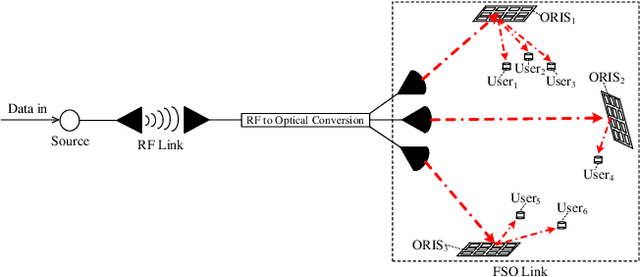
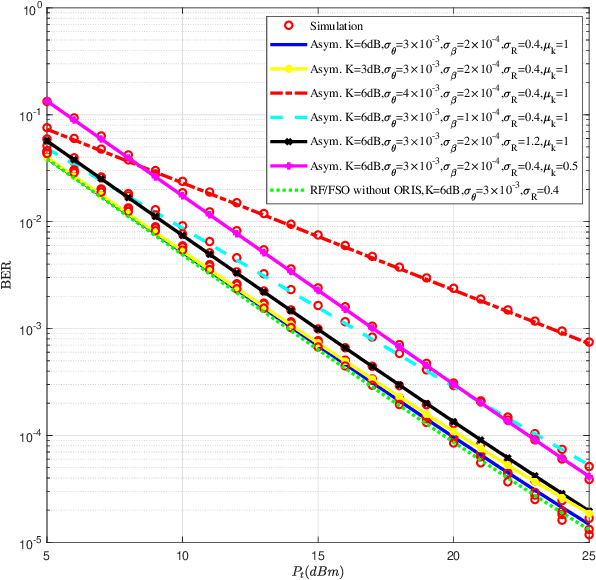
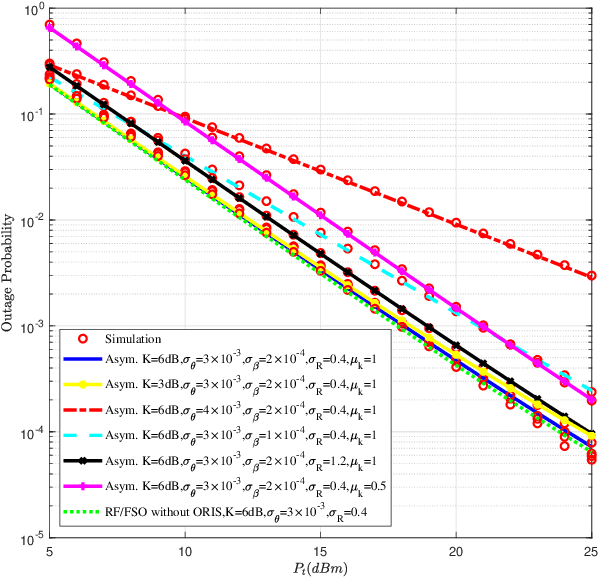
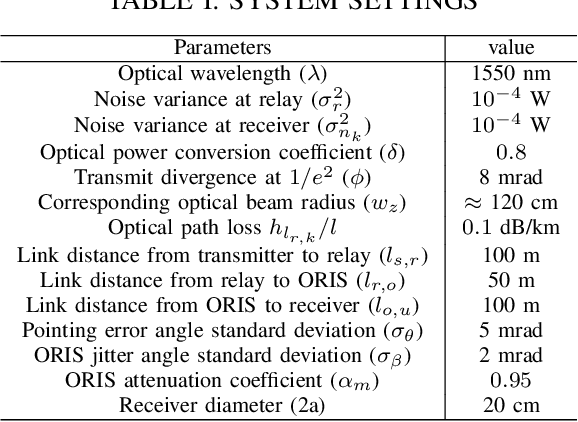
Abstract:Optical reconfigurable intelligent surface (ORIS) is an emerging technology that can achieve reconfigurable optical propagation environments by precisely adjusting signal's reflection and shape through a large number of passive reflecting elements. In this paper, we investigate the performance of an ORIS-assisted dual-hop hybrid radio frequency (RF) and free space optics (FSO) communication system. By jointly considering the physical models of ORIS, RF channel, atmospheric turbulence, and pointing error, the closed-form solutions of the system's precise outage probability, asymptotic outage probability and BER have been derived. It is shown through numerical results that the derivation results are accurate and the RF-FSO links with ORISs show a slightly worse performance than the traditional RF-FSO links. Based on theoretical analysis and simulation results, the system design and effect of each parameter have been discussed.
A Novel Method to Estimate the Coordinates of LEDs in Wireless Optical Positioning Systems
Sep 09, 2021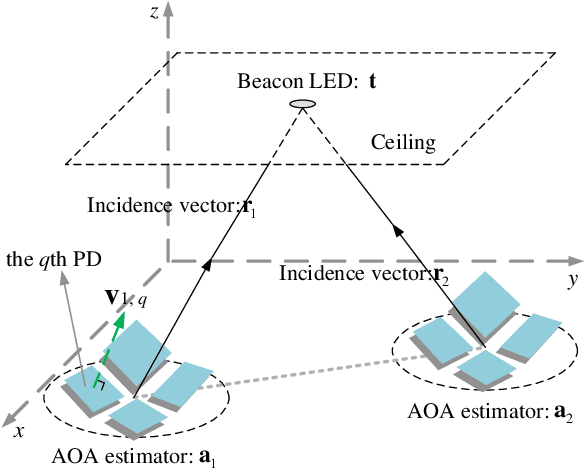
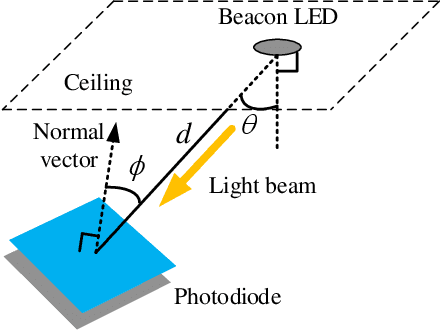
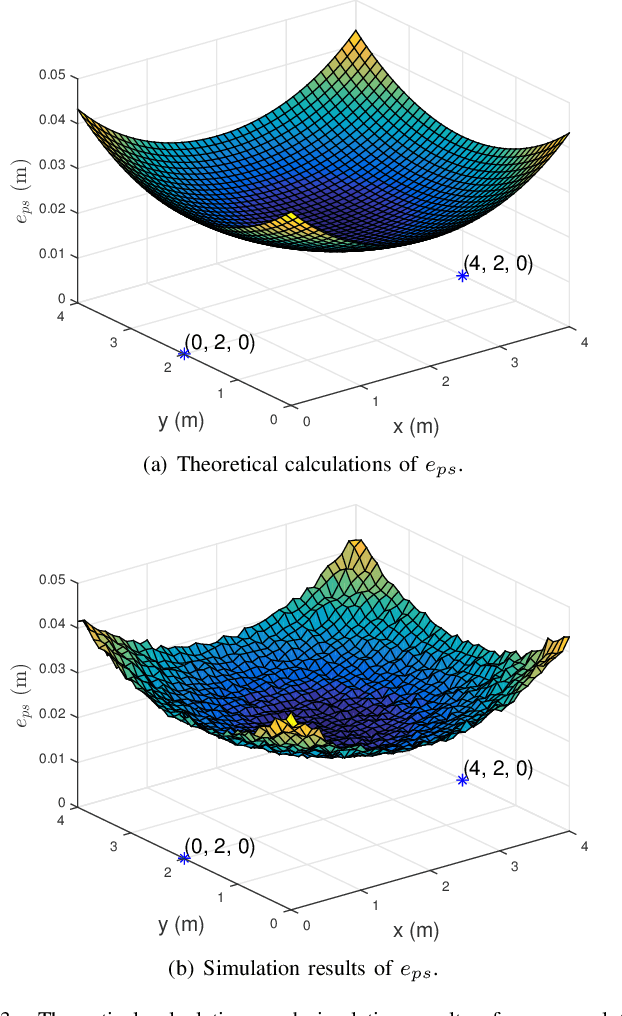
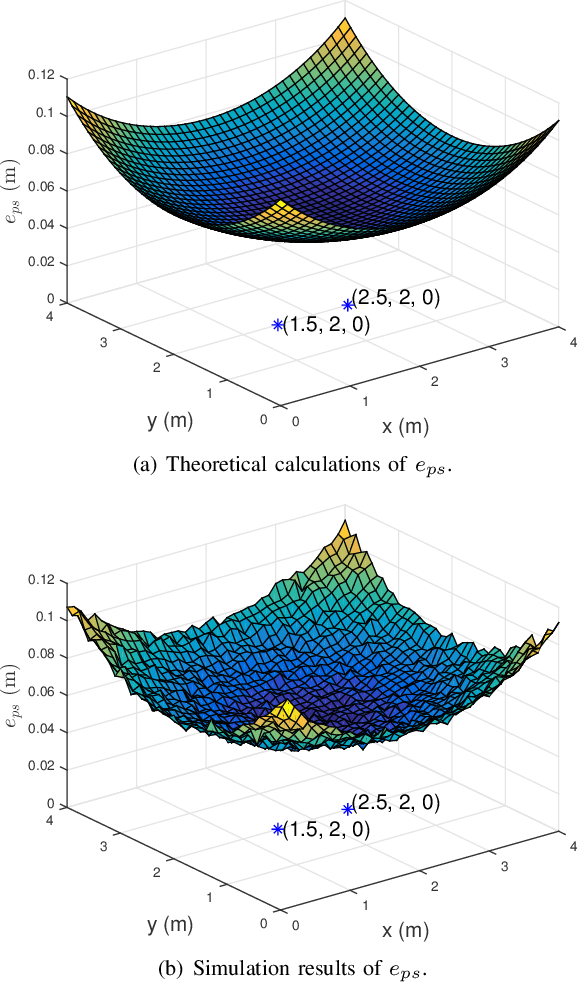
Abstract:Traditional visible light positioning (VLP) systems estimate receivers' coordinates based on the known light-emitting diode (LED) coordinates. However, the LED coordinates are not always known accurately. Because of the structural changes of the buildings due to temperature, humidity or material aging, even measured by highly accurate laser range finders, the LED coordinates may change unpredictably. In this paper, we propose an easy and low-cost method to update the position information of the LEDs. We use two optical angle-of-arrival (AOA) estimators to detect the beam directions of the LEDs. Each AOA estimator has four differently oriented photodiodes (PDs). Considering the additive noises of the PDs, we derive the closed-form error expression for the proposed LED coordinates estimator. Both analytical and Monte Carlo experimental results show that the layout of the AOA estimators could affect the estimation error. These results may provide intuitive insights for the design of the optical indoor positioning systems.
Outage Analysis and Beamwidth Optimization for Positioning-Assisted Beamforming
Sep 01, 2021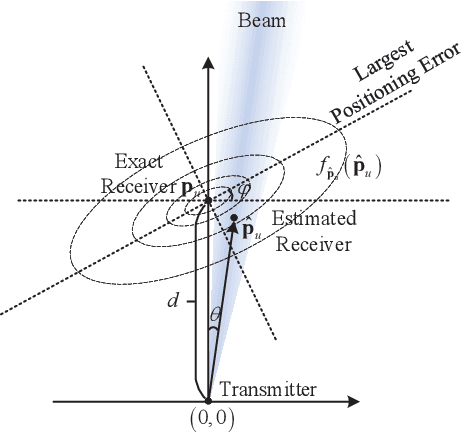

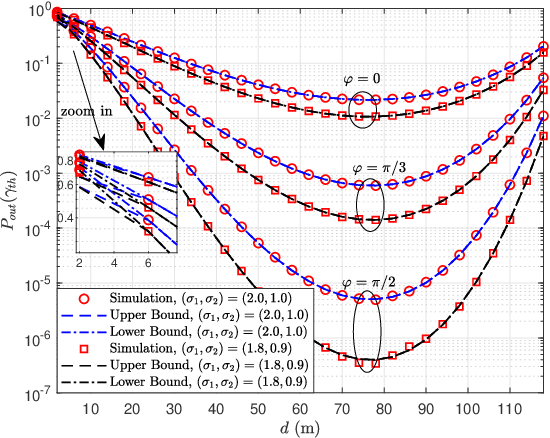
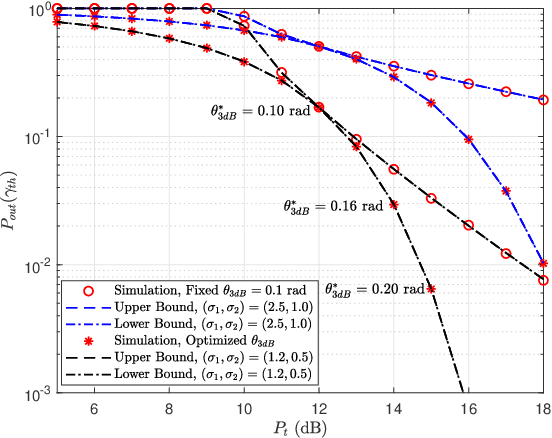
Abstract:Conventional beamforming is based on channel estimation, which can be computationally intensive and inaccurate when the antenna array is large. In this work, we study the outage probability of positioning-assisted beamforming systems. Closed-form outage probability bounds are derived by considering positioning error, link distance and beamwidth. Based on the analytical result, we show that the beamwidth should be optimized with respect to the link distance and the transmit power, and such optimization significantly suppresses the outage probability.
 Add to Chrome
Add to Chrome Add to Firefox
Add to Firefox Add to Edge
Add to Edge